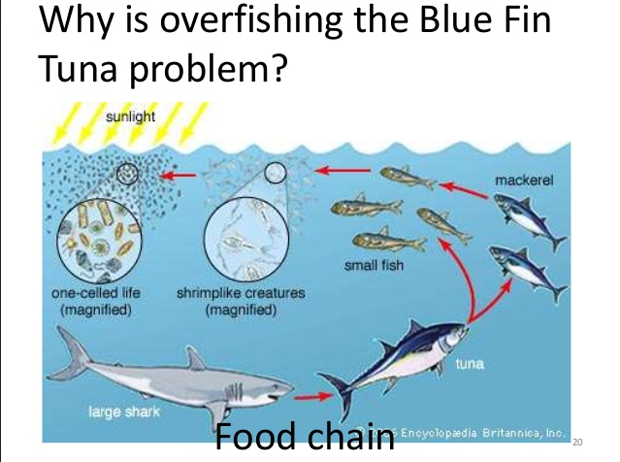
Overfishing the Blue Fin Tuna in Japan. Image slideshare.net.
Pacific Tuna
By Lauren Stallings Clement / Conservation Editor / September 9, 2016
[dropcap]I[/dropcap]t has been an important few weeks for Pacific tuna. Today, the International Union for Conservation of Nature (IUCN) will determine the outcome of its Motion 53, a proposal that would close 30% of EEZs. This measure has some groups like the Pacific Islands Tuna Industry Association concerned. As Charles Hufflett, advocate and chair of the PITIA told RadioNZ, closures of this scale could be devastating to the economies of smaller island nations, and would not solve the issue of overfishing, which would still occur in other areas. Others like Kosi Latu of the Secretariat of the Pacific Regional Environmental Programme hold to an idea of sustainable fishing as the best long-term policy for both wildlife and Pacific economies.
Sustainable, the Old Battle Cry
This decision comes after the failure of the Western and Central Pacific Fisheries Commission (WCPFC) to come together and agree on a plan to protect Pacific tuna, continuing a long-standing battle over the species. Japan is accused of blocking any significant conservation efforts, considering the economic importance of the fish to their markets.
Japan, as Usual
There may be, however, some hope for conservation efforts in the U.S. With strong data on their side, Defenders of Wildlife in conjunction with other groups posted a notice on Aug. 31st announcing their petition for the “National Marine Fisheries Service to list Pacific bluefin tuna under the Endangered Species act.” This action would make the bluefin tuna trade illegal in the U.S. and likely help to restore the population by eliminating a large section of the international market.
Will Illegal Work?
In a similar vein, the International Union for Conservation of Nature (IUCN), currently meeting for their last day, released a report on Sept. 7th highlighting the potential dramatic effects of global warming on species’ breeding grounds, patterns, and migration patterns, including bluefin tuna. As NOAA states: “Populations could also change where they look for food, moving to higher latitudes in different locations, and change their depth distribution. The location of tuna fishing grounds and the types of gear used for catching specific species or stocks would also be affected.”
Global Warming is Here
There may be a new way to farm bluefin tuna. On Sept. 7th, the Japan Times reported that Japanese company Hyoshoku announced that they had created the first successful bluefin tuna farm that uses only formulated feed. Considering the issues surrounding fisheries worldwide, this solution might be far better than overfishing wild populations, but it would pose a new set of problems.
NOTE: Featured Image is wholesalers survey fresh tuna at the Tsukiji fish market in Tokyo before an auction. Photograph: Toru Hanai/Reuters.



Join the discussion One Comment